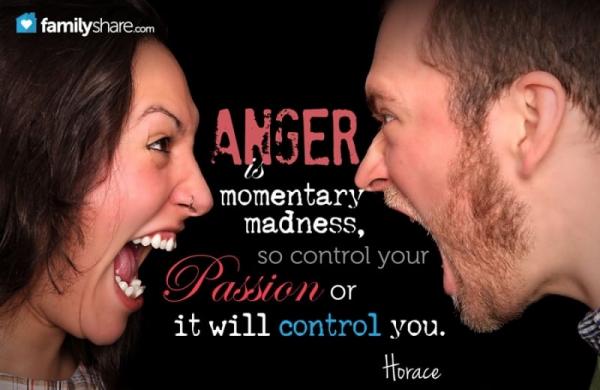
What happens when you forcefully push against a free-standing object? Most likely, it falls over and so do you. That happened while I was learning how to ski. I got off the lift only to find the slippery ground and my wobbly legs sliding under me. Unfortunately, I couldn't stop myself and took out the whole row of skiers waiting to descend the mountain. We all toppled like dominos!
However, when a pair of objects push against each other in an equal action-reaction, the oppositional force upholds you both. That's why my body and gravity keep me grounded against the earth. This is Newton's 3rd Law of Motion. It's a law of nature.
The same thing happens when one partner in marriage turns on the other with a force of anger or contention. If the spouse fights back, the two engage in battle and uphold the contention. The opposing forces continue, locked in equal tension.
It's natural to want to fight back, but it's not right. The fighting often escalates with each person pushing back harder, causing pain and inflicting damage. Children in these families learn negative communication behaviors from their parents and are sometimes caught in the crossfire. Enrique R. Falabella, a religious leader, made this observation about these kinds of relationships: "We are still far from eliminating emotional abuse. The harm caused by this form of abuse dwells in our memory, it wounds our personality, it sows hatred in our hearts, it lowers our self-esteem and it fills us with fear." Emotional abuse should never be tolerated in families.
Remember, it takes two people to make an argument. We can be the one that lets go and finds a better way to react. Our resolve can be one stated by Falabella: "In order to contend, you need two people, and I will never be one of them."� Contention between partners can dissipate if one or both people decide not to engage in opposing the other. When both partners are calm with a problem-solving attitude, they can discuss how to help each other should one begin to contend in the heat of the moment. Here are five prevention strategies that couples might find helpful in that discussion:
1. Have a sign from the partner
If an ill-tempered spouse begins to lose his temper, the partner gives him a pre-determined sign that reminds him of his commitment to stay in control. This could be a signal word or phrase ("A happy home") that could perhaps be silly or nonsensical ("Sloppy Joes" or "Belly button") to bring humor back. It could also be a gesture or sign such as pointing to your nose or clasping your hands together. All should be said and done non-confrontationally and with a smile of understanding. You are teaching your partner to acknowledge his or her emotional state and how to get back in control quickly.
2. Take a break
When you notice your partner spiraling into negative emotion, be the one who pulls back. Remind yourself that you will never be the opposing side that creates an argument. Tell your spouse, "Let's take a break right now. I can see you feel strongly about this issue and I want us both to be able to discuss it calmly and respectfully." Then find a time to get back together to talk about it. Be sure to keep the discussion respectful or you will have to take a break again.
3. Go to sleep
Yes, that's right. Late at night, we usually have duller senses. Tiredness wears down complex problem solving and rational thinking. This is why children know they can get away with more when we are tired! I've found the saying, "Never let the sun go down on your anger" unuseful. You can at least agree to "discuss this in the morning when you both feel better." I feel more restored, my mind sharper and my patience fresher when I've had enough sleep. Talk when you are both rested in body and mind and the day is brighter.
4. Write down your thoughts
This is a healthy outlet for expressing emotion in a constructive way. It prevents a spillage of uncensored words spoken aloud. Writing down your thoughts is a helpful practice when you want to communicate deliberately with your spouse. If you prepare for a partner meeting by first writing out what you want to say, you can choose your words wisely, including only those that are helpful and not harmful. When you get together, reading your thoughts keeps the emotion at a distance and allows you both to see the issue more objectively.
5. Go on a walk - or do some form of exercise
Talking with your partner while physically engaged helps the good blood flow, gets oxygen to your brain and releases endorphins - all physiologically healthy for problem solving. It's more difficult to get worked up about an issue when you are working out together. If you are out of breath, you'll want to save it for breathing, not ranting against a spouse. Additionally, the partner who needs to take a break (see #2), will benefit by making that "time out" where he or she does some sort of physical exercise.
These five practices are most effective when both partners are committed to healthy problem solving and modeling that behavior for their children. In all relationships, respect for self and the other must be the foundation. Then, when slip-ups happen, as they sometimes do, the partner can affirm, "In order to contend, you need two people, and I will never be one of them."�

